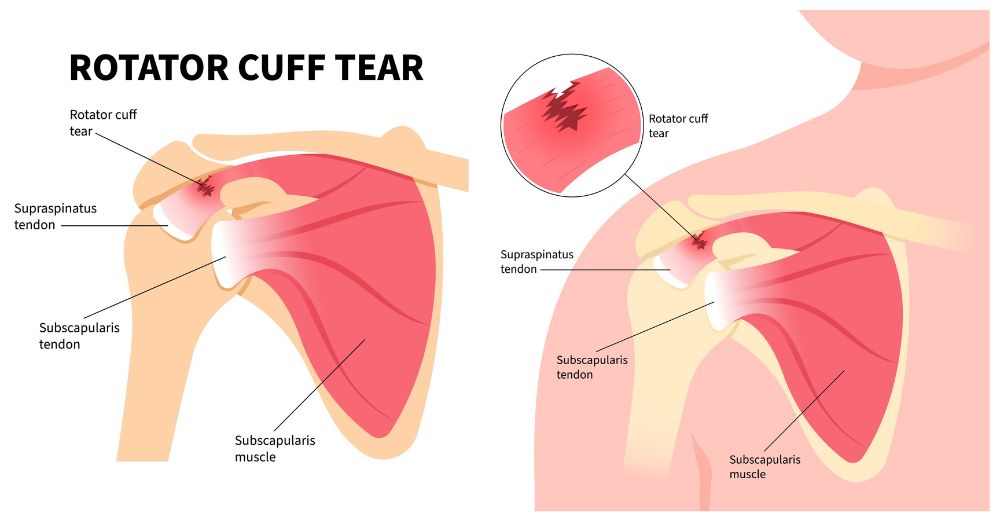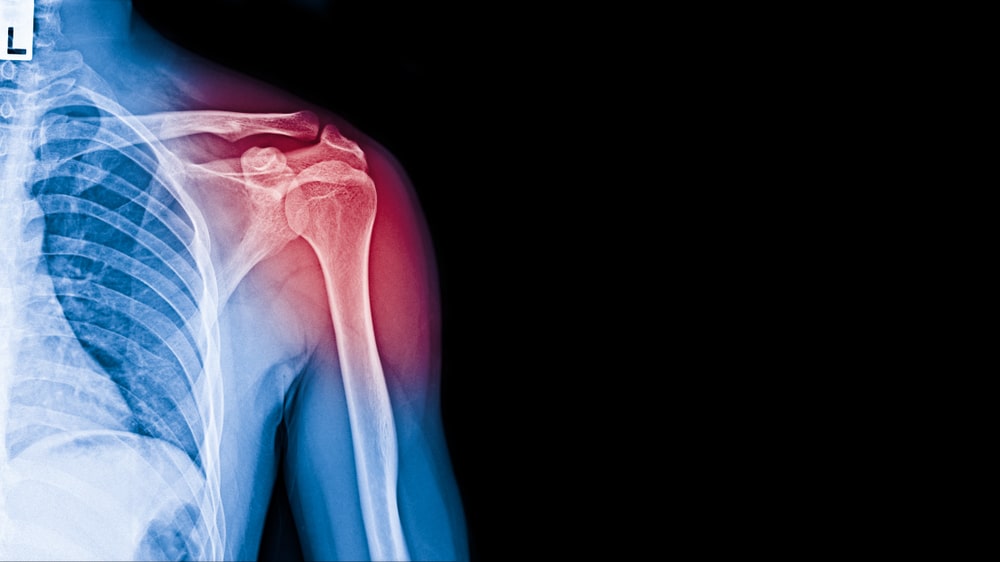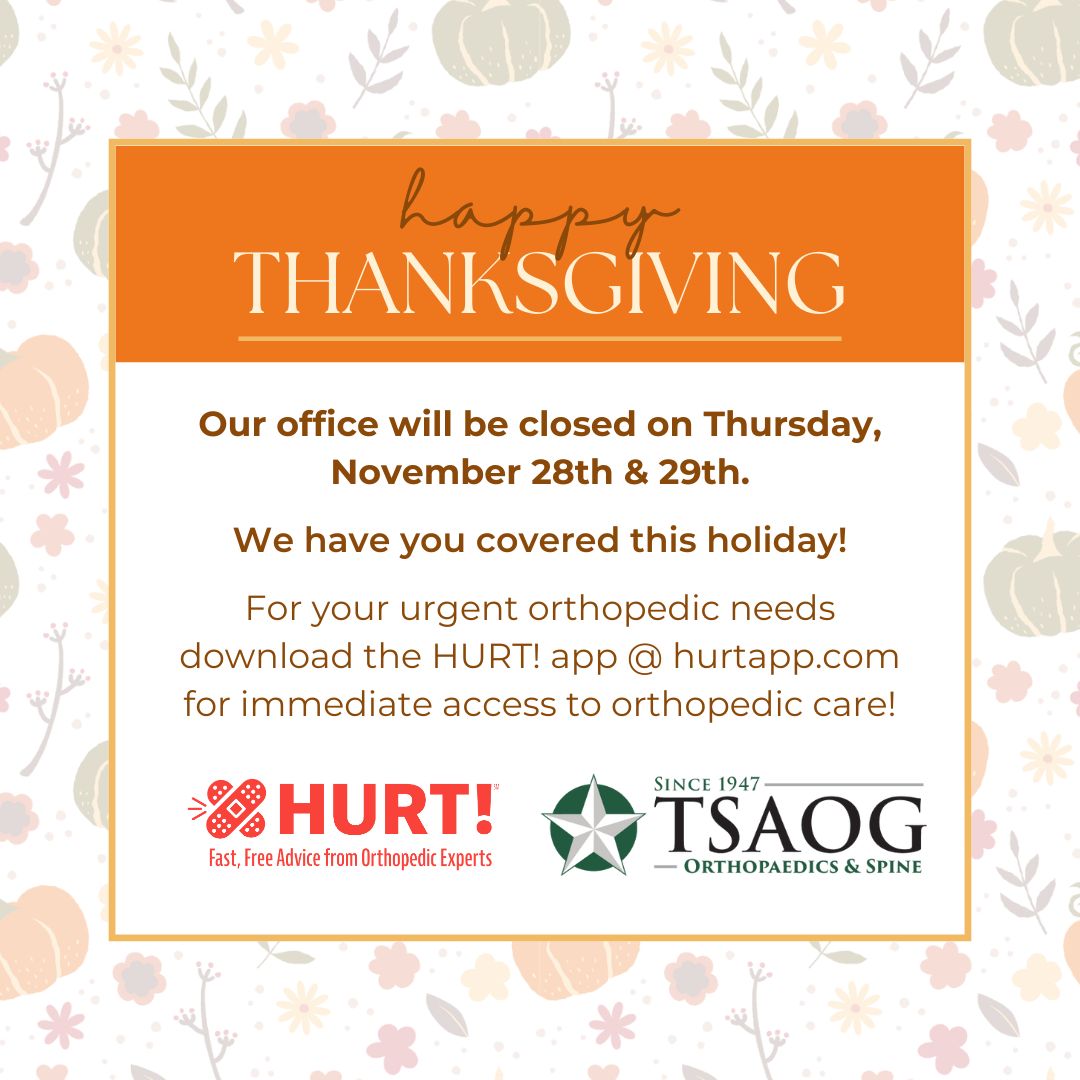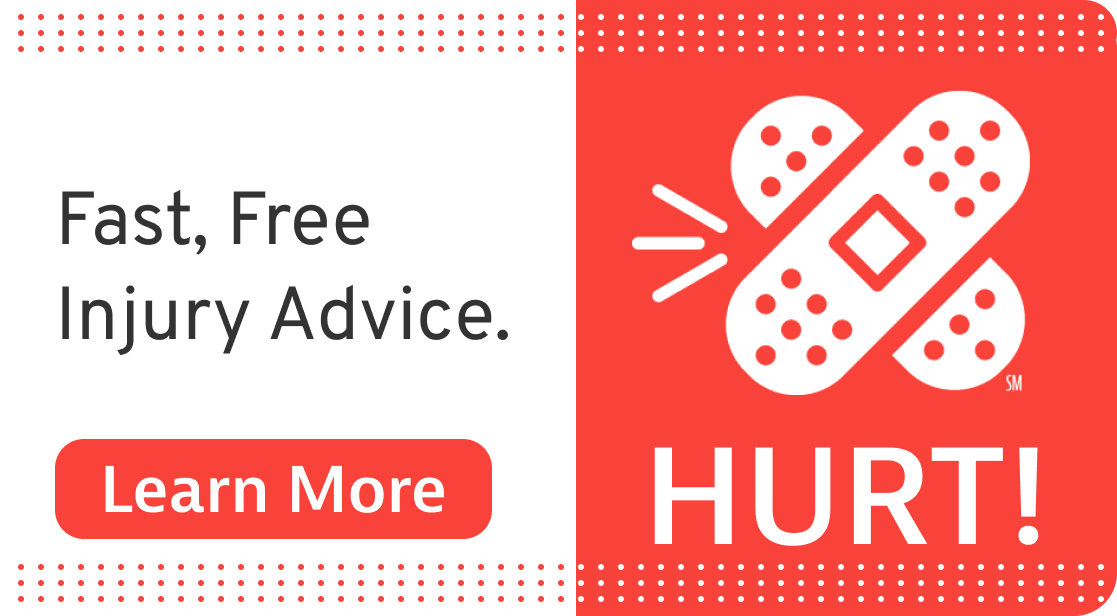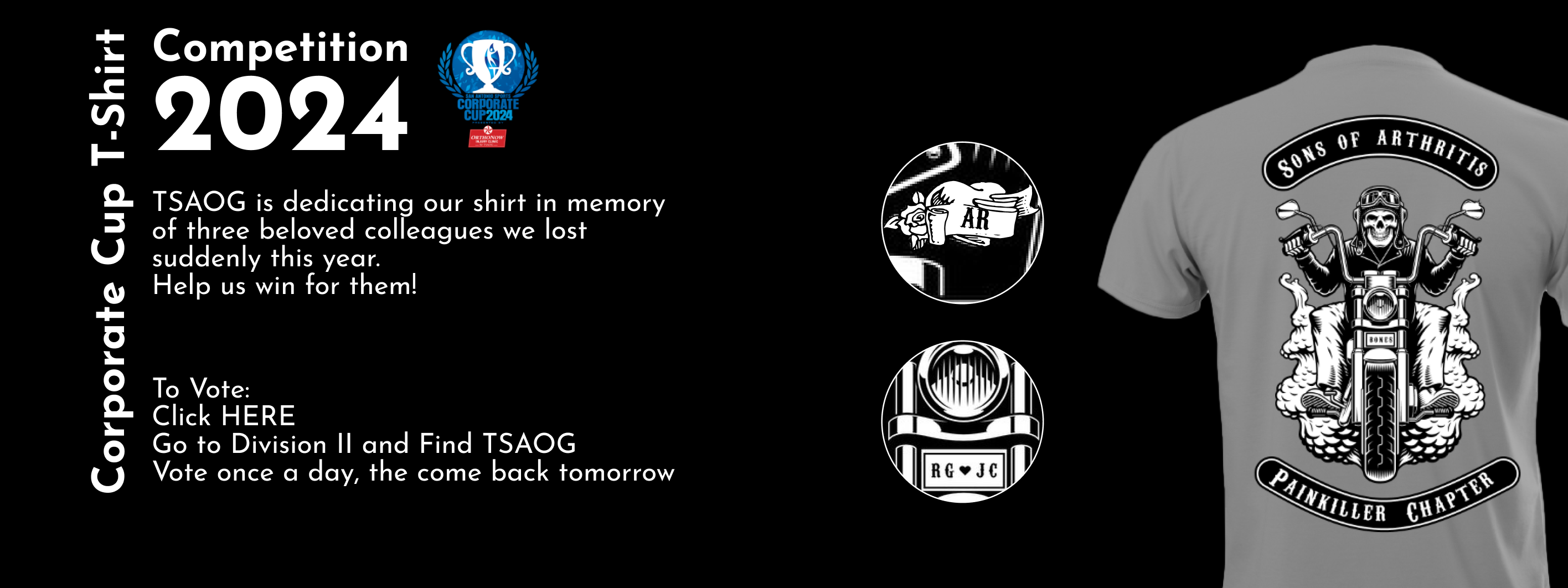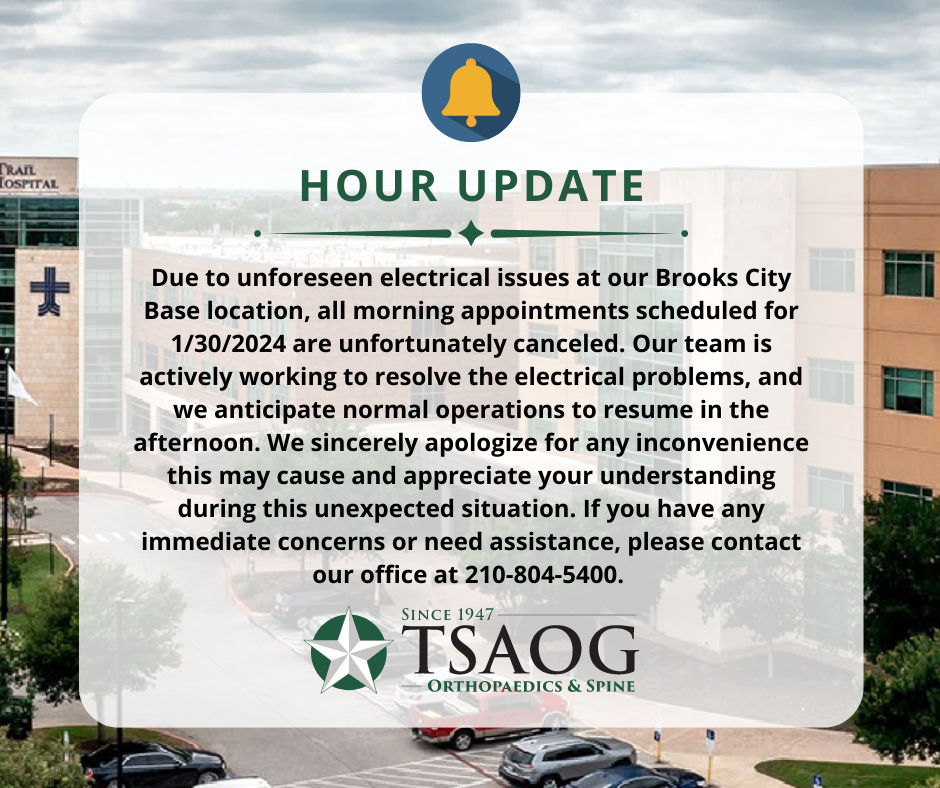Reviewed by Dr. Robert Hartzler Robert U. Hartzler, M.D., M.S. – TSAOG Orthopaedics & Spine.
Key Takeaways:
- “Shoulder instability” means that the ball of the shoulder joint is not staying properly in the socket
- The shoulder commonly experiences instability because it is a “loose joint” that is highly mobile.
- Shoulder instability is a complex problem: virtually every aspect of its management is debated amongst shoulder experts
- Any patient, regardless of age, sex, or activity level, who has had a serious shoulder instability event (ball coming out of the socket) should seek care with an orthopaedic surgeon who can provide guidance about management (imaging and treatment options)
- Shoulder instability is not a “DIY” condition, since incorrect management can result in further damage to the shoulder and potentially risk worsening of the condition
- Surgery is often needed to prevent further instability events, especially for young athletes
- Non-surgical management can require the care of specialized therapists and/or therapy devices such as e-stim
- For athletes desiring to return to high-risk collision sports (e.g. football, rugby, ice hocky) return to play testing can lower the rate of recurrent instability
Shoulder instability happens when the structures around the shoulder joint do not work to keep the ball within its socket. Instability occurs on a spectrum from dislocation (ball completely out of socket), to subluxation (ball partly out of socket), to apprehension (feeling that the ball might come out of socket). The typical instability patient doesn’t feel pain except when instability is happening; however, chronic instability can lead to painful damage of the bones or soft tissues around the joint.
Understanding the nature of this condition is crucial for managing and treating it effectively. In short, shoulder instability is a complex problem: virtually every aspect of its management is debated amongst shoulder experts. This includes the terminology of shoulder instability, the meaning of physical examination findings, the correct imaging studies to obtain in its diagnosis, the right treatment options, and the best pathway to return to sports for athletes.
Any patient, regardless of age, sex, or activity level, who has had a serious shoulder instability event (ball coming out of the socket) should seek care with an orthopaedic surgeon who can provide guidance about management (imaging and treatment options).
Join us as we explore the topic of shoulder instability: anatomy of the shoulder, symptoms, causes, treatment options, and when to see a doctor.
Shoulder Anatomy
Before we dive into shoulder instability, let’s briefly discuss shoulder anatomy.
The shoulder joint, or the glenohumeral joint, consists of three main bones:
- humerus (or upper arm bone)
- scapula (or shoulder blade)
- clavicle (or collarbone.)
The head of the humerus fits into a shallow socket in the scapula referred to as the glenoid. This socket is surrounded by a ring of cartilage called the labrum, which helps deepen the socket and stabilize the joint.
Ligaments, which are strong bands of tissue, connect the bones and provide stability by limiting the joint’s movement at the end ranges of motion. A group of muscles and tendons known as the rotator cuff surrounds the shoulder joint and provides support and movement when the joint is not at the end ranges. When any of the soft tissues (labrum, ligaments, or muscle-tendons units) holding the shoulder in place become damaged or weakened, the joint can become unstable.
What is chronic shoulder instability?
Chronic shoulder instability is a condition in which the shoulder repeatedly slips out of place. This instability can be due to trauma or congenital issues. When the shoulder is chronically unstable, it can be progressively damaged such that each instability event makes another one more likely to happen.
Types of Shoulder Instability
Understanding the different types of shoulder instability can help diagnose and determine an appropriate treatment plan.
Traumatic Shoulder Instability
This type occurs when a sudden injury or trauma, such as a fall or sports injury, causes the shoulder to dislocate. Traumatic shoulder instability is often associated with high-impact activities and is common in contact sports like football, rugby, and wrestling.
A dislocation occurs when the head of the humerus is forced out of the glenoid socket. Dislocation can happen in various directions: anterior (forward), posterior (backward), or inferior (downward). Anterior dislocations are the most common, accounting for the vast majority of all shoulder dislocations. Anterior dislocation usually happens when the arm is forced into an awkward position, such as during a fall on an outstretched hand.
Consider a football player who experiences a dislocation during a tackle. The impact forces the shoulder out of its socket, tearing the ligaments and potentially causing a labral tear. Even after initial treatment, the shoulder remains vulnerable to future dislocations, especially if the player returns to the sport without adequate rehabilitation.
Atraumatic Shoulder Instability
This instability happens without a significant injury and can develop gradually due to repetitive overhead activities or inherent looseness in the shoulder joint. It is often seen in individuals who engage in activities that involve repetitive motion, such as swimming, gymnastics, or volleyball.
For example, a competitive swimmer may develop atraumatic instability due to the repetitive overhead motion of the swimming strokes. Over time, the shoulder ligaments become stretched, leading to a feeling of looseness and pain during activity. The elongation can progress to chronic instability without proper intervention, impacting the athlete’s performance and quality of life.
Acquired Shoulder Instability
This type results from repetitive movements, often seen in athletes who participate in activities that require frequent overhead motions, leading to gradual stretching of the shoulder ligaments. Acquired instability is often a combination of both traumatic and atraumatic factors.
Take gymnasts, for instance, who frequently perform routines that require significant shoulder strength and flexibility. The constant strain on the shoulder joint can lead to acquired instability, where the shoulder becomes loose over time.
Common Symptoms of Shoulder Instability
Recognizing the symptoms of shoulder instability is crucial for early intervention and treatment.
- Frequent Dislocations: Repeated dislocations are a hallmark of shoulder instability. These can occur during physical activity or simple movements, such as reaching overhead or lifting objects.
- Sensation of Looseness: Many individuals with shoulder instability report a feeling that their shoulder is loose or about to give way. This sensation can be unsettling and affect daily activities.
- Pain: Pain can range from a dull ache to sharp, intense pain, especially during or after physical activity. Chronic pain is common in cases of long-standing instability.
- Weakness: Muscle weakness, particularly in the shoulder and upper arm, can result from recurrent dislocations and the associated damage to the stabilizing structures.
- Limited Range of Motion: Another result of chronic instability is difficulty moving the shoulder through its full range of motion. The limitations can be due to pain, muscle guarding, or mechanical blockages from damaged tissue.
Common Causes of Shoulder Instability
Understanding the underlying causes of shoulder instability can help develop effective prevention and treatment strategies.
Previous Dislocations
Prior shoulder dislocations can weaken the ligaments, making the joint more prone to future dislocations. Each dislocation stretches the ligament further, reducing its ability to stabilize the joint.
Repetitive Strain
Activities that involve repetitive overhead motions, such as swimming or throwing sports, can stretch the shoulder ligaments over time. This repeated strain can lead to gradual loosening of the joint, increasing the risk of instability.
Congenital Factors
Some individuals are born with naturally loose ligaments, making their shoulders more prone to instability. This condition, known as ligamentous laxity, can contribute to atraumatic and acquired shoulder instability.
Trauma
A sudden injury, such as a fall or a blow to the shoulder, can cause the shoulder to dislocate and become unstable. Traumatic events often damage the ligaments and other stabilizing structures, leading to long-term instability.
Shoulder Instability Treatment Options
Treatment for shoulder instability varies based on the severity of the condition, the patient’s activity level, and the underlying cause. Both non-surgical and surgical options are available.
Non-Surgical Treatments
Physical Therapy
Physical therapy is a cornerstone of non-surgical treatment for initial treatment of shoulder instability for certain patients with at low risk for recurrent instability. Alternatively, therapy and return to play once symptom free can be a poor choice for high risk patients for whom surgery should be strongly considered as initial treatment to prevent recurrence.
A structured rehabilitation program focuses on strengthening the shoulder muscles, improving joint stability, and restoring the range of motion.
- Strengthening Exercises: Specific exercises target the rotator cuff and scapular muscles to enhance stability. Examples include external rotations, internal rotations, and scapular retractions.
- Flexibility Exercises: Stretching exercises help maintain and improve the range of motion. These can include doorway stretches and cross-body shoulder stretches.
- Proprioception Training: Exercises that enhance the body’s ability to sense the position of the shoulder joint can reduce the risk of dislocation. Balance exercises on unstable surfaces, such as a Bosu ball, are commonly used.
Medication
Anti-inflammatory medications can help reduce pain and swelling, making it easier for patients to participate in physical therapy and daily activities. Commonly prescribed medications include nonsteroidal anti-inflammatory drugs (NSAIDs) like ibuprofen and naproxen.
Bracing
Wearing a shoulder brace can provide extra support and stability to the joint during physical activities. Braces are controversial in their ability to affect recurrence. They may benefit athletes psychologically who wish to continue their sport while managing shoulder instability.
Surgical Treatments
Surgical intervention is often necessary to restore stability to the shoulder joint or to repair damaged structures.
Arthroscopic Surgery
This minimally invasive procedure involves repairing or tightening the ligaments using small incisions. Arthroscopic surgery is often used to address labral tears and to reattach ligaments to the bone.
- Bankart Repair: This procedure involves reattaching the torn labrum to the glenoid socket. It is commonly performed in patients with anterior shoulder instability.
- Capsular Shift: This surgery tightens the overstretched capsule by folding and suturing the excess tissue, reducing the joint’s looseness.
- Arthroscopic bone reconstruction: advanced techniques for bone reconstruction of the socket and humeral head are now available depending on the experience level of the surgeon with these techniques
Open Surgery
In more severe cases, open surgery might be required to reposition or reconstruct the shoulder structures. Open surgery allows for more extensive reconstructions and is often used for complex cases.
- Latajet Procedure: This procedure involves transferring a portion of the coracoid process, along with its attached muscles, to the front of the glenoid. This provides additional stability and prevents dislocation.
- Humeral head bone reconstruction: using donated bone to reconstruct the impacted bone of the ball of the shoulder
When To Seek a Doctor About Shoulder Instability
Any patient, regardless of age, sex, or activity level, who has had a serious shoulder instability event (ball coming out of the socket) should seek care with an orthopaedic surgeon who can provide guidance about management (imaging and treatment options).
It is crucial to seek medical advice if you experience:
- Recurrent Shoulder Dislocations: Frequent dislocations can indicate significant instability and should be evaluated by a healthcare professional.
- Persistent Pain or Discomfort: Ongoing pain that affects daily activities or sleep warrants a medical evaluation to determine the cause and appropriate treatment.
- Sensation of Looseness or Instability: Feeling that the shoulder is loose or unstable, especially during physical activities, should prompt a visit to the doctor.
- Difficulty Performing Daily Activities: If shoulder issues interfere with work, sports, or daily tasks, seeking medical advice is essential.
Understanding shoulder instability and its implications is key to managing the condition effectively. By recognizing the symptoms, identifying the causes, and seeking appropriate treatment, individuals can achieve improved shoulder function and quality of life.
If you are experiencing shoulder instability, schedule an appointment with TSAOG today.


